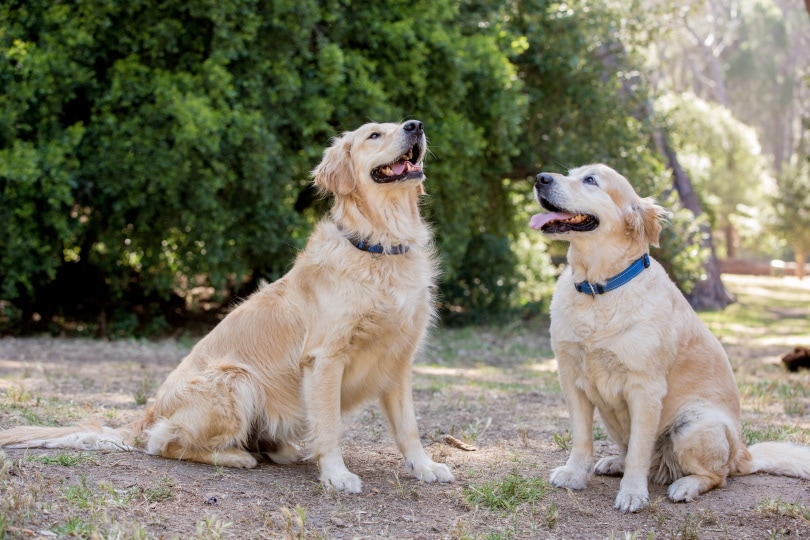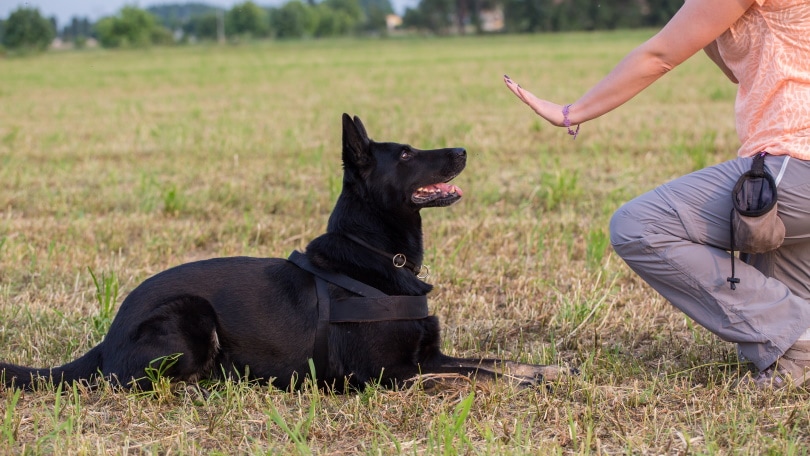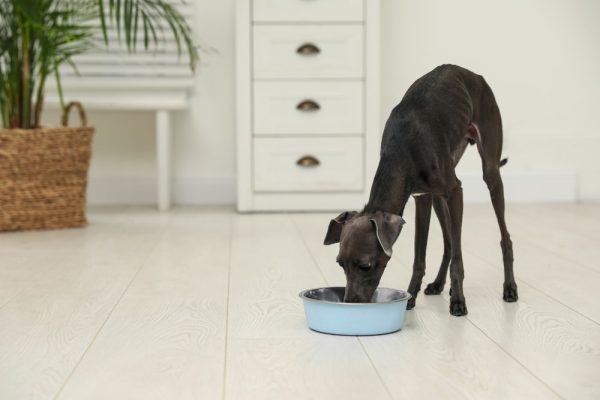One of the most important things you can do to keep your dog safe is to train them to ignore other dogs. There are a few different ways to do this, and each one will work in a different way. The most important thing is to be consistent with your training. Training your dog to ignore other dogs can be a valuable skill if you live in an area where there are a lot of other dogs.
By dealing with their behavior, you can prevent conflicts from occurring. There are a few steps you need to follow to properly teach your dog to be calm and safe.

Before You Begin
Dogs are social animals, and as such, they enjoy interacting with other dogs. However, when you are training your dog to ignore other dogs, you will need to be consistent in your commands and provide plenty of positive reinforcement. This training goes against your dog’s natural behaviors and they will often want to greet other dogs they see. We know that this can be a problem if the other dog is aggressive, but your dog is learning to break a reflex. Be patient! Your dog is going against every fiber in their being to be obedient to you.


The 15 Tips to Train Your Dog to Ignore Other Dogs
Gather your supplies. Preparation is key when training your dog to ignore other dogs. In order to achieve success, you will need a handful of supplies, including treats, a clicker (or similar marker), and a leash. Make sure to choose a quiet, distraction-free area in which to train. Choose a peaceful time of day and make sure there are no other dogs around.
1. Redirect With Treats
One way to train your dog to ignore other dogs is to redirect their attention using treats. You can do this by having a treat in one hand and calling your dog’s name while showing them the treat. Once your dog looks at you, give them the treat and praise them. It’s important to do this consistently so that your dog learns that they should look at you when they see another dog instead.

2. Positively Reinforce Name Recognition
Positive reinforcement is a training technique that rewards a behavior in order to increase the likelihood of that behavior being repeated. In order to train your dog to ignore other dogs, you will need to reinforce name recognition positively. When your dog hears their name, reward them with a treat or positive attention. This will help them learn that good things happen when they hear their name. As they get better at ignoring other dogs, slowly reduce the number of treats you give them when they respond correctly.
3. Practice Indoors
If you have a reactive or aggressive dog around other dogs, the best way to train them to ignore other dogs is by practicing indoors. This will help to create a controlled environment where your dog can focus on you and their training. Start by having your dog sit or stay near you, and then have someone else walk in the room with a dog. If your dog reacts, calmly correct them and have them focus back on you.

4. Have Patience
There is no surefire way to train your dog to always ignore other dogs, but patience and consistency are key. This may take some time and effort, but your dog can be taught to behave appropriately around other dogs with patience and perseverance.
5. Make Your First Outing a Calm One
When you take your dog out for the first time, it is important to have a calm outing. This means that you should avoid exciting activities like playing fetch or going to a busy park. Instead, try to keep things low-key by walking around your neighborhood or taking a leisurely stroll through a park. As your dog becomes more comfortable with other dogs, you can slowly increase the level of excitement.

6. React Immediately
When training your dog to ignore other dogs, it is important to respond early and react quickly while the strange dog is still at a distance. This will help your dog associate the behavior with positive outcomes and understand that they should not pay attention to other dogs. Wait for your dog to see another dog at a distance, but don’t wait for them to react. As soon as your dog begins barking or pulling, call their name and reward them with treats until the other dog has gone.
7. Visit Slightly Busier Areas
To train your dog to ignore other dogs, you will gradually need to take them to slightly busier areas. This will help them become used to other dogs’ sights and sounds without becoming too excited. Once your dog is comfortable in these areas, you can begin to work on training them to ignore other dogs. You will need to provide a lot of positive reinforcement when they successfully ignore another dog and continue to take them to busier areas until they are completely comfortable.

8. Repetition Is Key
In order to train your dog to ignore other dogs, you will need to remember that repetition is key. You will need to keep repeating the desired behavior until your dog has mastered it. In order to achieve this, you will also need to show your dog that there are no exceptions, as dogs are smarter than we often give them credit for. Dogs learn best when they are able to practice new behaviors consistently.
You will need to be patient and consistent as you work with your dog to get them to ignore other dogs. It may take some time, but eventually, your dog will learn that looking at or interacting with other dogs is not something that is rewarded, and will begin to ignore them.
9. Don’t Challenge Your Dog With Too Many Changes
In order to train your dog to ignore other dogs, you should avoid challenging your dog with too many changes. Dogs are creatures of habit and thrive on routine. When you abruptly change your dog’s daily routine, it can cause them to become stressed or anxious, which can lead to unwanted behaviors such as barking or aggression towards other dogs. In order to successfully train your dog to ignore other dogs, you should keep their environment as stable and consistent as possible.

10. Always Strengthen the Connection Between Good Behavior and Rewards
The basic idea behind training a dog to ignore other dogs is that you want to create a strong connection between good behavior and rewards. In order to do this, whenever your dog exhibits good behavior around other dogs, immediately reward them with treats, praise, or petting. This will help them associate positive experiences with other dogs and encourage them to ignore them in the future. Don’t slack off! If you stop rewarding them, they will stop behaving. Ask a veterinarian if you wouldn’t be sure about any of the aspects of your dog’s training.
If you need to speak with a vet but can't get to one, head over to PangoVet. It's our online service where you can talk to a vet online and get the advice you need for your pet — all at an affordable price!

11. Factor Treats Into Your Dog’s Daily Diet
A variety of factors, such as age, weight, activity level, and health condition, should be considered when determining how to best treat a dog’s diet. Typically, a dog should have one or two cups of food per day, with treats accounting for no more than 10% of that total. There are many different types of treats available on the market, but it is important to select those that are low in fat and calories.
Keep in mind the number of treats you are giving out while training so that your dog does not become overweight.

12. Gradually Wean Them Off Treats
The gradual weaning off of treats is an important process when training a dog. It allows them to focus on the commands being given rather than the expectation of a treat. This can be done by slowly reducing the number of treats given for each task and eventually only providing a treat as a reward for the perfect execution of the command.
This helps the dog to understand that good behavior is its own reward and that it does not need a tangible incentive to obey.
13. Don’t Anticipate the Worst
It’s important not to tense up or show your dog that you’re anxious, as this will only increase their anxiety and make them more likely to react. Instead, try to stay relaxed and positive, even if another dog comes close. If your dog does start to react, calmly correct them without shouting or getting angry, and then resume walking as if nothing happened.

14. Don’t Panic
When training your dog to ignore other dogs on walks, it is important not to panic when you see another dog. By remaining calm, you can respond best and successfully train your dog to ignore other dogs. It may take some time and patience, but eventually, your dog will learn to behave properly when around other dogs.
15. Don’t Pull or Yell
One way to train your dog to ignore other dogs on walks is to use positive reinforcement. When your dog ignores another dog, reward them with a treat or verbal praise. If your dog starts to pull or bark at another dog, do not yell or pull on the leash. This will only reinforce the behavior. Instead, try to interrupt the behavior by saying “No” in a firm voice and then rewarding them for ignoring the other dog.


Conclusion
Training your dog to ignore other dogs on walks is a process that takes patience and time, but it is well worth the effort. Dogs that are properly trained will be able to walk calmly around other dogs without getting too excited or agitated. This can make walks much more enjoyable for both you and your dog.
Featured Image Credit: Rolf Klebsattel, Shutterstock



















